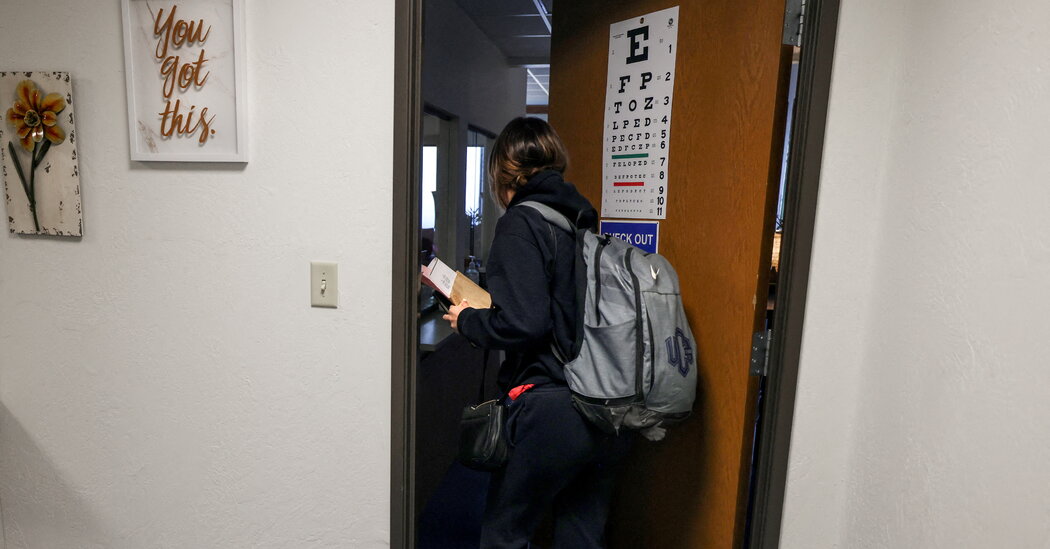
The number of abortions in the United States has increased, reversing what had been a three-decade decline, according to a new report.
The uptick began in 2017 and, as of 2020, one in five pregnancies, or 20.6 percent, ended in abortion, according to the report by the Guttmacher Institute, a research organization that supports abortion rights. In 2017, 18.4 percent of pregnancies ended in abortion.
The institute, which collects data by contacting every known abortion provider in the country, reported that the number of abortions increased to 930,160 in 2020, from 862,320 in 2017. The number increased in every region of the country: by 12 percent in the West, by 10 percent in the Midwest, by 8 percent in the South and by 2 percent in the Northeast.
The new data was released as the Supreme Court prepares to issue a ruling that could effectively overturn the Roe v. Wade standard that has made abortion legal in the United States for nearly 50 years. If the court’s final ruling is similar to a draft opinion that leaked last month, about half of the states are expected to quickly ban or sharply restrict abortion, while other states are gearing up to expand access for patients from states that make abortion unavailable.
Overall, the new report found, the abortion rate rose in 2020 to 14.4 per 1,000 women ages 15 to 44 from 13.5 abortions per 1,000 women of that age group in 2017, a 7 percent increase.
Read More on the U.S. Abortion Debate
During this period, the report said, births nationwide declined by 6 percent, meaning that “fewer people were getting pregnant and, among those who did, a larger proportion chose to have an abortion.”
The report, which found that the number and rate of abortions increased in 33 states and the District of Columbia, said “there were no clear patterns” to explain each state’s trajectory. It suggested several reasons for the national increase, including trends that directly affected low-income people, the population most likely to seek abortions in recent years: Some states expanded Medicaid coverage for abortion, and funds that provide financial assistance to patients seeking abortions expanded.
Another factor may have been the Trump administration policy of preventing programs that received federal family planning money, known as Title X funds, from mentioning the option of abortion to patients. That rule caused Planned Parenthood and several state governments to decline to accept Title X funding, which may have reduced access to other family planning services, including contraception, for low-income people, and led to more unintended pregnancies, the Guttmacher report said. The Biden administration has since rescinded the Trump-era policy.
The rise in abortions came at a time when many conservative states were placing new restrictions on the procedure. But the report said that while 25 states enacted 168 abortion restrictions from 2017 to 2020, some were stopped by legal challenges and many were enacted by states that already had significant restrictions, so the new laws might not have prevented many more abortions.
At the same time, other states enacted 75 provisions to protect or expand abortion access, including by requiring insurance to cover abortion and by allowing nurse practitioners, physician assistants and certified nurse midwives to provide some abortion services, the report said.
“It shows that people in every state seek abortions despite restrictive measures in many states,” said Leslie Reagan, a historian of American medicine and public health at the University of Illinois at Urbana-Champaign.
The data included most of the first year of the coronavirus pandemic. The report said that while abortion access was disrupted in some states during that time, both because of attempted bans and because of outbreaks and limits on in-person medical care, some states maintained access to abortion. In addition, for part of 2020, a judge’s ruling allowed abortion pills, which account for more than half of the country’s abortions, to be mailed to patients — a practice that the Food and Drug Administration made permanent in December 2021.
Dr. Reagan, who wrote a book titled “When Abortion Was a Crime,” said she believed “the severe unemployment and food insecurity that followed the shutdown” during the pandemic had also fueled the increase in abortion. “Many people couldn’t feed themselves and their existing families and knew they could not support a child.”
The State of Roe v. Wade
What is Roe v. Wade? Roe v. Wade is a landmark Supreme court decision that legalized abortion across the United States. The 7-2 ruling was announced on Jan. 22, 1973. Justice Harry A. Blackmun, a modest Midwestern Republican and a defender of the right to abortion, wrote the majority opinion.
Marjorie Dannenfelser, president of Susan B. Anthony Pro-Life America, issued a statement excoriating the increase in abortions. “The pro-life movement must continue educating fellow Americans, and pro-life lawmakers at both the state and federal level must be as ambitious as possible in building consensus,” she said.
A news release from her group said that the new report found “substantial increases in abortion in states like California, Illinois and New York, which have expanded their abortion policies in recent years and where there are virtually no limits on abortion up to birth.”
In fact, the percentage increase in the number of abortions in those states was less than in some conservative states, like Mississippi, where the number of abortions increased 40 percent from 2017 to 2020, and Oklahoma, where the number of abortions rose 103 percent during that time.
The growth in Mississippi is striking because it is a 2018 Mississippi law banning most abortions later than 15 weeks into a pregnancy that is currently before the Supreme Court. The Guttmacher report said that Mississippi residents used to seek abortions in surrounding states, but because those states enacted restrictions that led clinics to close, more patients went to Mississippi’s one abortion clinic.
Oklahoma just passed the nation’s toughest abortion ban, but from 2017 to 2020 the increase in abortions there was likely because many patients had traveled there from Texas, which has many restrictive laws. Still, the new report showed that the number of abortions also increased in Texas during those years — by 5 percent, the same percentage increase as in New York.
In the 17 states where the number and rate decreased, by far the biggest decline was in Missouri, which had 4,710 abortions in 2017 and 170 in 2020. The report said this drop was because patients from Missouri had sought abortions in Illinois, where the number of abortions increased 25 percent during that time.
A handful of states in each region of the country experienced decreases, including five of the nine states in the Northeast, a reflection of the complex influences that determine who seeks abortions and where they obtain them.




